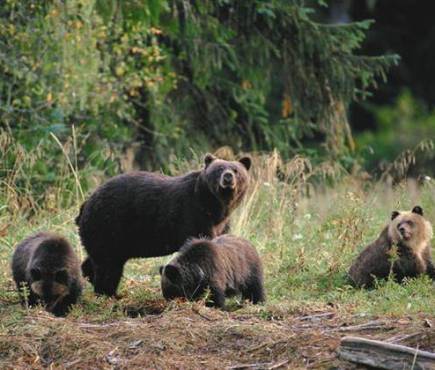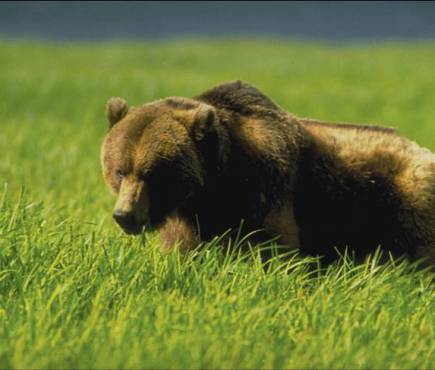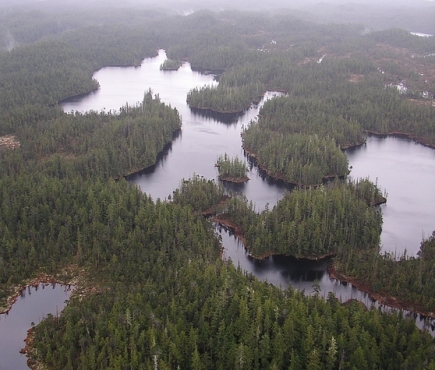Located along British Columbia’s coast, the Great Bear Rainforest is a lush, isolated, and beautiful landscape that is part of the largest coastal temperate rainforest system on the planet. More than 100 wild rivers flow undisturbed from the mountains to the Pacific, and some ancient trees — cedar, spruce, and hemlock — are more than 1,000 years old. Accessible only by boat or plane, it is a refueling station for migratory birds and a home to healthy populations of wolf, salmon, bears, and other species.
Life as we know it exists because of a delicate balance of interactions and dependencies among living things. Driving a species extinct or to the brink can upset that balance and fray the web of life. Protecting biological diversity is critical for keeping our planet healthy. It’s also one of the many reasons why the David and Lucile Packard Foundation is committed to protecting special places that boast some of the richest biodiversity in the world — places like the Great Bear Rainforest.
-

-

The Great Bear Rainforest’s aboriginal people — known as First Nations in Canada — settled the region more than 10,000 years ago. First Nations carefully managed the bounty provided by the sea and the land, thriving as cultures and communities without significantly harming or depleting their resources. But change came to the region over the last century. Commercial fishing depleted salmon stocks. Aggressive clear-cut logging encroached, having already swept through the U.S. Pacific Northwest, British Columbia’s lower mainland, Vancouver Island, and southeast Alaska. A hotspot of biodiversity was in peril, and First Nations knew that if the natural wealth of the region were to dwindle, their livelihoods would diminish as well.
-
By the late 1990s, conservation groups that included ForestEthics, Greenpeace, and Sierra Club British Columbia, working with First Nations, developed a campaign to save the Great Bear Rainforest. The Packard Foundation entered the story in 2000, compelled by our commitment to land conservation and protecting biodiversity. At that time, timber companies agreed to halt operations in the region. In exchange, environmental groups suspended their campaigns against retailers who used the companies’ timber.
-
By February 2006, a landmark deal was reached. The Great Bear Rainforest Agreement placed 5 million acres under strict protection and allowed sustainable commercial activities on the balance of the land by applying ecosystem-based management. It also included the creation of a new $120 million economic development investment program for First Nation communities.
-

During the process, support was provided by a broad coalition of funding partners, including the William and Flora Hewlett Foundation, the Gordon and Betty Moore Foundation, the Wilburforce Foundation, and the Rockefeller Brothers Fund. The Packard Foundation provided 33 grants used for coordination among environmental groups, collaborative negotiation, scientific analysis, and land-use planning. Grants supported the participation of First Nations in the process, and provided seed funding for an economic development program.
-
In the end, this agreement was a milestone in global conservation, achieving lasting protection for the Great Bear Rainforest — one of the most extraordinary and biologically diverse ecosystems on Earth.
